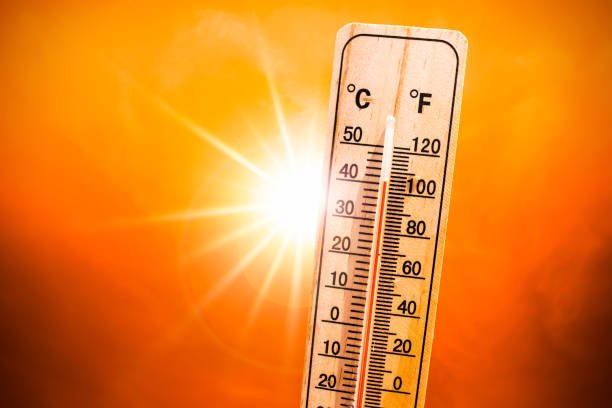Blog
Obituary for Teresa Świeży-Klimecka: A Life Remembered

Introduction
The passing of Teresa Świeży-Klimecka marks the end of an era filled with remarkable contributions and heartfelt connections. As we gather to remember her life, we reflect on the legacy she leaves behind—a tapestry woven with love, resilience, and a deep commitment to her family and community. In this article, we will celebrate her life, explore her impact, and provide a comprehensive overview of her journey.
Early Life
Teresa Świeży-Klimecka was born on [insert birth date] in [insert place]. From a young age, she displayed a remarkable curiosity and an insatiable thirst for knowledge. Her parents, [insert parents’ names], instilled in her the values of hard work, compassion, and integrity, which would guide her throughout her life. Teresa was known for her kindness and was often the first to lend a helping hand to those in need.
Education and Career
Teresa’s educational journey was marked by excellence. She attended [insert schools attended], where she excelled academically and developed a love for [insert subjects of interest]. After completing her education, she embarked on a successful career in [insert field of work]. Her professional journey was characterized by dedication and passion, earning her respect and admiration from colleagues and clients alike.
Throughout her career, Teresa was known for her innovative thinking and ability to bring people together. She held various positions in [insert companies or organizations], where she made significant contributions that would leave a lasting impact. Her work ethic and integrity were admired by many, and she was often sought after for her expertise and insight.
Family Life
Teresa Świeży-Klimecka was not just a dedicated professional; she was also a beloved wife, mother, and grandmother. She married [insert spouse’s name] on [insert wedding date], and together they built a life filled with love and laughter. Teresa took great pride in her family, nurturing strong bonds and instilling values that would guide her children and grandchildren throughout their lives.
Her home was a haven of warmth and acceptance, where family gatherings were celebrated with joy and laughter. Teresa’s culinary skills were renowned, and she often delighted her loved ones with her delicious home-cooked meals, passing down cherished recipes that will be treasured for generations to come.
Community Involvement
Teresa’s commitment to her community was unwavering. She was actively involved in various local organizations and charities, dedicating her time and resources to causes close to her heart. Her efforts made a significant difference in the lives of many, and her legacy of service continues to inspire those who knew her.
Whether volunteering at local shelters, organizing community events, or mentoring young individuals, Teresa’s impact was felt far and wide. She believed in the power of community and worked tirelessly to foster connections among individuals from all walks of life.
Hobbies and Interests
Beyond her professional and family life, Teresa had a range of hobbies and interests that enriched her life. She was an avid reader, often losing herself in the pages of her favorite novels. Her love for literature not only provided her with enjoyment but also sparked insightful discussions with friends and family.
Teresa was also passionate about [insert hobbies, e.g., gardening, painting, traveling]. Her garden was a reflection of her nurturing spirit, filled with vibrant flowers and plants that she lovingly tended to. Traveling brought her joy, as she explored new cultures and formed lasting memories with her loved ones.
Health Challenges
In the latter part of her life, Teresa faced various health challenges. Despite these obstacles, she approached each day with grace and determination. Her resilience was a testament to her character, and she continued to inspire those around her with her positive outlook on life. She was supported by her loving family and friends, who rallied around her during difficult times.
Legacy and Impact
Teresa Świeży-Klimecka’s legacy is one of love, compassion, and unwavering dedication. Her influence extends far beyond her immediate family, reaching into the lives of countless individuals she touched throughout her journey. Those who knew her remember her for her kindness, wisdom, and ability to bring people together.
Her contributions to the community and the lives of others serve as a reminder of the importance of service and compassion. Teresa’s story encourages us to cherish our loved ones, embrace our passions, and leave a positive mark on the world.
Conclusion
The life of Teresa Świeży-Klimecka is a testament to the power of love, resilience, and community. As we remember her, let us celebrate the impact she had on our lives and strive to carry forward her legacy of kindness and service. Although she may no longer be with us, her spirit will live on in the hearts of those who were fortunate enough to know her.
Frequently Asked Questions
- What were Teresa Świeży-Klimecka’s main accomplishments? Teresa’s main accomplishments included her successful career in [insert field], her active involvement in community service, and her role as a nurturing mother and grandmother.
- How did Teresa impact her community? Teresa made a significant impact by volunteering, organizing community events, and supporting local charities, helping to foster a sense of connection and support among community members.
- What hobbies did Teresa enjoy? Teresa enjoyed reading, gardening, and traveling, finding joy and fulfillment in these pursuits.
- What were some of Teresa’s values? Teresa valued kindness, hard work, integrity, and the importance of family and community.
- How did Teresa handle health challenges? Teresa approached her health challenges with grace and resilience, inspiring those around her with her positive attitude and determination.
- What legacy did Teresa leave behind? Teresa left behind a legacy of love, compassion, and service, encouraging others to cherish their relationships and contribute positively to their communities.
- What can we learn from Teresa’s life? We can learn the importance of kindness, resilience, and the impact of giving back to our communities from Teresa’s life. Her story serves as a reminder to cherish our loved ones and make a difference in the lives of others.
Blog
Achieving Excellence in Goalkeeping: A Detailed Look at the Keeper Standards Test

In the world of football (soccer), the role of the goalkeeper is one of the most demanding and specialized on the field. While the other players must be skilled in attacking and defending, the goalkeeper stands as the last line of defense, responsible for ensuring the ball doesn’t find its way into the back of the net. With the importance of this role, there has emerged a standard to measure a keeper’s abilities—the Keeper Standards Test.
The Keeper Standards Test is a rigorous evaluation that measures various skills and attributes that a goalkeeper must possess. From agility and reaction time to decision-making and distribution, the test assesses the core competencies that separate an average keeper from an exceptional one. Whether you’re an aspiring young goalkeeper looking to break into the professional ranks or a seasoned player seeking to refine your skills, understanding and excelling in this test is crucial.
This article will explore the different facets of the Keeper Standards Test, covering what it entails, how it is structured, and why it is becoming the benchmark for goalkeeper development. We’ll also look at how to prepare for this test, avoid common mistakes, and set yourself up for success.
The Importance of Goalkeeper-Specific Testing
While outfield players are often evaluated on passing, shooting, and movement, goalkeepers require a more tailored evaluation process. The nature of their role calls for quick reflexes, excellent positioning, and the ability to read the game. These requirements are very different from the rest of the team, which is why goalkeeper-specific testing like the Keeper Standards Test exists.
The Keeper Standards Test allows coaches and trainers to see how well a keeper can perform under various scenarios, including high-pressure situations. It also provides valuable data on the keeper’s strengths and areas for improvement, offering a comprehensive picture of their capabilities.
Key Areas Assessed in the Keeper Standards Test
The Keeper Standards Test focuses on various skill sets that are crucial to a goalkeeper’s success. These include:
1. Reaction Time and Reflexes
One of the most important aspects of goalkeeping is the ability to react quickly. Whether it’s a close-range shot or a sudden deflection, a goalkeeper’s reflexes often make the difference between conceding and making a crucial save. In the test, this is typically assessed through rapid-fire drills where the goalkeeper has to react to multiple shots in quick succession.
2. Shot-Stopping Ability
A goalkeeper’s primary responsibility is to stop the ball from entering the goal. Shot-stopping drills form a significant part of the Keeper Standards Test, evaluating how well the keeper can block both powerful and precise shots. This can involve long-range efforts, close-range shots, and one-on-one situations where decision-making is key.
3. Positioning and Footwork
Good positioning is essential for a goalkeeper, as it allows them to cover the goal efficiently and react to threats. The test assesses how well the goalkeeper positions themselves relative to the ball, their defenders, and the opposition. Proper footwork is also critical as it enables a keeper to move swiftly across the goal line.
4. Aerial Ability
Goalkeepers are often called upon to claim crosses or deal with aerial balls. This aspect of the test measures how well a keeper can judge the flight of the ball, command their area, and make clean catches or punches when the ball is crossed into the box.
5. Distribution and Ball Handling
Modern goalkeepers are not just shot-stoppers; they are also key distributors of the ball. The test evaluates a goalkeeper’s ability to distribute the ball effectively, both by hand and by foot. This includes accurate throws, long goal kicks, and playing out from the back under pressure.
6. Communication and Decision-Making
Goalkeepers must constantly communicate with their defenders and make quick decisions. The test includes scenarios that require the keeper to organize the defense, decide when to come off their line, and handle high-pressure situations effectively.
7. Mental Toughness and Resilience
The mental aspect of goalkeeping cannot be overstated. A good goalkeeper must be able to shake off mistakes quickly and stay focused throughout the game. This part of the test assesses how well a keeper can maintain concentration, recover from errors, and perform under pressure.
Structure of the Keeper Standards Test
The Keeper Standards Test is typically divided into several sections, each designed to assess different aspects of a goalkeeper’s skill set. A typical structure may look like this:
- Warm-Up and Agility Drills
The test begins with a series of warm-up exercises to prepare the goalkeeper physically and mentally. Agility drills, such as ladder runs and cone exercises, are used to assess footwork and overall quickness. - Shot-Stopping Drills
The next phase involves shot-stopping exercises from various distances and angles. This can include free-kicks, penalties, and one-on-one situations to test the goalkeeper’s reflexes and decision-making under pressure. - Aerial Ball Drills
The goalkeeper will face a series of aerial challenges, such as crosses, corners, and long balls, to assess their ability to judge the flight of the ball and command the penalty area. - Distribution Tests
The test moves into the distribution phase, where the goalkeeper is required to throw, kick, and pass the ball accurately to teammates under different conditions. - Game Scenario Simulations
Finally, the goalkeeper will participate in a series of game-like simulations. These scenarios are designed to mimic real match situations and test how well the keeper can apply their skills in a high-pressure, game-like environment.
Each section of the test is graded based on performance, with certain areas carrying more weight depending on the level of competition (youth, amateur, professional).
How to Prepare for the Keeper Standards Test
Preparation is crucial to performing well in the Keeper Standards Test. Here are some tips to help you get ready:
1. Train Reaction Time and Reflexes
Practice drills that improve your reflexes, such as facing rapid shots from different angles. You can use reaction balls or quick-passing drills to enhance your reflexes and reaction time.
2. Work on Footwork
Quick footwork is essential for positioning. Use ladder drills, cone exercises, and quick side-to-side movements to improve your ability to move swiftly and efficiently in goal.
3. Focus on Distribution
Distribution drills, including both short and long-range passes, should be incorporated into your training. Practice both throwing and kicking the ball accurately to improve your control and precision.
4. Improve Your Aerial Game
Work with a coach or teammate to simulate crosses and corners, focusing on timing your jumps, commanding your area, and catching or punching the ball cleanly.
5. Mental Training
Goalkeeping requires mental resilience. Visualization techniques, mindfulness practices, and mental toughness exercises can help you stay focused and recover quickly from mistakes during the test.
Common Mistakes to Avoid During the Keeper Standards Test
Even the most skilled goalkeepers can falter during the Keeper Standards Test if they are not aware of common pitfalls. Here are some mistakes to avoid:
1. Overcommitting
One of the biggest mistakes goalkeepers make is overcommitting, especially during one-on-one situations. Stay patient and focus on positioning rather than rushing out too early.
2. Poor Footwork
Goalkeepers who neglect their footwork may struggle to get into the right positions to make saves. Footwork is key to maintaining balance and reacting quickly, so make sure it’s a central part of your preparation.
3. Ineffective Communication
Failure to communicate effectively with defenders can lead to confusion and missed opportunities. Make sure you practice organizing your defense and giving clear, concise instructions.
4. Misjudging Aerial Balls
Aerial ability is one of the hardest skills to master. Misjudging crosses or long balls can lead to easy goals. Focus on your timing and decision-making when dealing with aerial threats.
5. Neglecting the Mental Side
Many goalkeepers focus solely on physical skills and neglect the mental aspects of the game. Mental resilience is key to staying composed under pressure, so incorporate mental training into your routine.
Conclusion
The Keeper Standards Test offers a detailed assessment of a goalkeeper’s abilities, ensuring that they possess the skills needed to excel in the modern game. Whether you’re an amateur goalkeeper striving to go pro or a professional looking to refine your craft, excelling in this test will set you apart. (more…)
Blog
Understanding the 92336-1832 Area Code: What You Need to Know
Blog
Navigating the Future of Weather Forecasting: Insights from VCWeather.org

In an era where technology influences every aspect of our lives, weather forecasting has become increasingly sophisticated. One platform that stands out in this realm is VCWeather.org, which has been making waves with its innovative approach to meteorology. This article explores the features, benefits, and implications of VCWeather.org in the context of modern weather forecasting. We will delve into its user interface, accuracy, unique features, and how it compares to traditional weather services.
Understanding VCWeather.org
VCWeather.org is an advanced weather forecasting platform designed to provide accurate and real-time weather data. It utilizes cutting-edge technology and algorithms to deliver precise forecasts, catering to a wide range of users—from casual consumers to professionals in various industries. The website focuses on various weather-related aspects, including temperature, precipitation, wind patterns, and severe weather alerts.
The Importance of Accurate Weather Forecasting
Accurate weather forecasting is essential for many reasons. For individuals, it can affect daily activities, travel plans, and outdoor events. For businesses, especially those in agriculture, construction, and transportation, precise weather information is crucial for decision-making. Natural disasters also make reliable forecasts indispensable; timely warnings can save lives and reduce property damage.
Features of VCWeather.org
User-Friendly Interface
One of the standout features of VCWeather.org is its user-friendly interface. The platform is designed for ease of use, allowing visitors to quickly find the information they need. The layout is intuitive, with clearly defined sections for different types of weather data. Users can easily navigate to local forecasts, radar maps, and severe weather alerts without feeling overwhelmed.
Real-Time Updates
VCWeather.org excels in providing real-time updates. The platform continuously collects data from various sources, including satellites, radar, and weather stations. This ensures that users receive the most current information, making it easier to plan activities or respond to changing weather conditions.
Localized Forecasts
Personalization is a key aspect of VCWeather.org. Users can enter their location to receive tailored forecasts that consider regional variations in weather patterns. This localized approach enhances the relevance of the information, ensuring that users are prepared for the specific conditions in their area.
Severe Weather Alerts
In an age where severe weather events are becoming more frequent, VCWeather.org prioritizes safety through timely alerts. Users can sign up for notifications regarding severe weather warnings, ensuring they are informed about potential threats such as thunderstorms, hurricanes, and tornadoes.
Data Visualization
Data visualization is another strong point for VCWeather.org. The platform utilizes advanced graphics and charts to present weather data in a visually appealing manner. This makes it easier for users to understand complex information at a glance, enhancing their overall experience.
How VCWeather.org Stands Out
While there are numerous weather forecasting platforms available, VCWeather.org distinguishes itself through its commitment to accuracy and user engagement. The platform employs advanced algorithms and machine learning techniques to analyze vast amounts of data, resulting in highly accurate forecasts. Additionally, user feedback is actively sought to improve the platform continually.
Comparison with Traditional Weather Services
Traditional weather services often rely on generalized forecasts that may not account for local variations. In contrast, VCWeather.org’s emphasis on localized data allows for a more precise understanding of weather conditions. This can be especially beneficial in regions where microclimates exist.
Moreover, traditional services may lag in providing real-time updates. VCWeather.org’s ability to offer immediate information ensures users are always informed about current conditions. This is particularly important during severe weather events when conditions can change rapidly.
The Future of Weather Forecasting
As technology continues to evolve, so does the field of weather forecasting. Innovations in artificial intelligence and machine learning are set to enhance the accuracy and speed of forecasts further. Platforms like VCWeather.org are at the forefront of these developments, ensuring they remain relevant in an ever-changing landscape.
The integration of social media and community engagement into weather forecasting is another trend worth noting. Users are increasingly turning to social media for updates and insights, creating a more interactive experience. VCWeather.org acknowledges this shift and is likely to incorporate more user-generated content in the future.
Benefits for Various Industries
Agriculture
Farmers depend on accurate weather forecasts to make informed decisions about planting, irrigation, and harvesting. VCWeather.org’s localized forecasts can help farmers mitigate risks associated with unpredictable weather, leading to better crop yields.
Transportation
The transportation industry relies heavily on weather data to ensure safety and efficiency. Airlines, shipping companies, and logistics firms benefit from the real-time updates and severe weather alerts provided by VCWeather.org, allowing them to make timely adjustments to their operations.
Event Planning
For event planners, weather can make or break an occasion. Accurate forecasts from VCWeather.org can help planners decide on suitable venues, times, and backup plans, ensuring events run smoothly regardless of the weather.
Challenges in Weather Forecasting
Despite advancements, weather forecasting still faces challenges. Unpredictable phenomena, such as microbursts or rapidly changing storm systems, can complicate accurate predictions. Additionally, the reliance on technology means that system failures or data inaccuracies can lead to miscommunication.
Conclusion
VCWeather.org represents a significant advancement in the field of weather forecasting. With its focus on accuracy, real-time updates, and user-friendly design, it is poised to meet the growing demands for reliable weather information in an ever-changing climate. As we look to the future, platforms like VCWeather.org will play a crucial role in keeping us informed and prepared for whatever the weather may bring.
Frequently Asked Questions
- What types of weather data can I find on VCWeather.org? VCWeather.org provides various data, including temperature, precipitation forecasts, wind patterns, and severe weather alerts.
- Is VCWeather.org free to use? Yes, VCWeather.org offers free access to its weather data and forecasts.
- How accurate are the forecasts on VCWeather.org? The platform employs advanced algorithms and real-time data collection, resulting in highly accurate forecasts.
- Can I sign up for weather alerts on VCWeather.org? Yes, users can sign up for notifications regarding severe weather alerts tailored to their location.
- How does VCWeather.org compare to other weather forecasting services? VCWeather.org distinguishes itself through its localized forecasts, real-time updates, and user-friendly interface, providing a more personalized experience.
- What industries benefit from VCWeather.org? Industries such as agriculture, transportation, and event planning benefit significantly from the accurate and timely weather information provided by VCWeather.org.
- Will VCWeather.org continue to evolve with technology? Yes, VCWeather.org is committed to integrating new technologies like AI and machine learning to enhance its forecasting capabilities further.
-

 Marketing2 months ago
Marketing2 months agoExploring www.goodmooddotcom.com Hotels Category: A Comprehensive Guide
-

 Real estate2 months ago
Real estate2 months agoEnhancing Mobile Home Exteriors: Trends, Materials, and Design Ideas
-

 Business2 months ago
Business2 months agoCFBWH: A Deep Dive into Its Importance and Relevance
-

 Tech2 months ago
Tech2 months agoTsumino-blog.com News: A Closer Look at the Popular Platform
-

 Entertainment1 month ago
Entertainment1 month agoSamsung H-Fi 5732B: A High-Fidelity Audio Experience
-

 Latest News2 months ago
Latest News2 months agoAncient Grains in a Healthy Cereal: A Nutritious Choice
-

 Business2 months ago
Business2 months agoBest Cars of 2020: A Comprehensive Guide from Guia-Automovil.com
-

 Business2 months ago
Business2 months agoDL10Compare: Your Ultimate Tool for Smart Comparison and Informed Decisions

